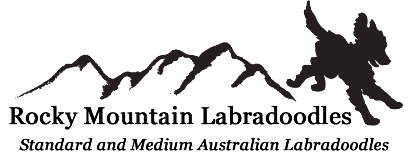Puppy Proofing
Puppies are curious and they are teething. This can get them into serious trouble. It is a good idea to prepare your home or at least the rooms your puppy will be in so there is minimal chances of an accident. Here is a list of possible safety issues:
- Remove poisonous house plants. Visit this site for a list www.aspca.org/pet-care/poison-control/plants/
- Secure cleaning products, (do not use Swiffer floor cleaner), paint and paint thinner, fertilizer, disinfectants, mothballs, insect and rodent poisons, antifreeze, medications (prescribed and over the counter), sewing supplies such as buttons, pins, yarn, ribbons, etc., hardware like nails, screws, paper clips, etc., plastic bags, six-pack holders.
- Keep electric cords out of chewing reach.
- Put lid down on the toilet. It could fall on their head and toilet cleansers can be harmful if swallowed.
- Always check when leaving puppy at home to make sure he is in a safe area. Look at a room from the viewpoint of a puppy.
- Clean up car leaks. Anti-freeze is deadly to dogs and it is appealing to them.
Veterinarian
You definitely want to find a good vet before you need one. Plus, in the Health Guarantee, you need to have the puppy seen by a vet in the first 3 days you have him. Ask family and friends who they would recommend. You can also find vets close to you and set up a time to visit them and see for yourself if they are someone you can talk easily with and can trust to care for your puppy. Once you find your vet, keep their phone number and on-call number in a easy to fine place, in case of an emergency.
Read up
For more detailed information on caring for a puppy and bringing up a great dog, read some books on the subject. Some good ones are:
- “After You Get Your Puppy” by Dr. Ian Dunbar
- “The Art of Raising a Puppy” by The Monks of New Skete
- “On Talking Terms with Dogs: Calming Signals” by Turid Rugaas
Laura Bussing at Gone to the Dogs here in Salida has some great information about house training and essential early puppy training. Master Puppy Training E- Book- Gone to the Dogs
Puppy Classes
Look into puppy classes and socialization classes as soon as possible. There are all types of classes and puppy play groups offered in most communities. One resource for finding classes and trainers is The Association of Pet Dog Trainers (APDT). The AKC has a couple of great programs that I feel are wonderful for dog owners and their puppies to participate in. The first one, for young puppies is the AKC S.T.A.R. Puppy Program. From there your puppy will be prepared for the AKC® Canine Good Citizen® Program.
Grooming
Puppy hair is almost worry free. Until their adult hair grows in, the coat does not take much maintenance. However, you will want to get your puppy used to being handled and groomed. A small slicker brush is good or a small pin bush will be fine to start. They should be brushed, have their ears and teeth looked at, and nails handled or trimmed every day. At around nine to sixteen months the adult coat starts to grow in. The puppy coat does not fall out and will start to cause matts. Brushing thoroughly to pull the puppy coat out from the new adult hair is necessary. This could be a good time to consider a good clip to ease the amount of brushing and formation of mats.
Once your Labradoodle puppy has had all of his shots, he can safely be taken to the groomer. Up to this point, handling and brushing your puppy everyday will prepare him for his first trip to the groomer. Let the groomer know you have a puppy and want to have an introductory visit. Even just for your puppy to meet and have a nail clip might be enough to start a good, calm rapport with the groomer. Follow up visits can begin to include a simple session of brushing, washing, drying, nail clip and ear hair pluck. Your puppy and groomer will be thankful for these small visits every 3-4 weeks so puppy can get used to all of the sights, sounds and sensations till he is ready for a full clip.
When the Big Day Comes
You might want to pack the car the day before you come to pick up your new puppy. With the excitement of the day you can easily forget some things that will make the trip a bit smoother.
Towels- Bring some old towels for accidents and for your puppy to cuddle on if he is riding on the passengers lap or in a crate. Paper towels can also be nice to have for clean up.
Water and Bowl- If you have a long drive, over an hour, you might need to stop for a pee break and to let you puppy have some water.
Crate-If there will be only on person picking the puppy up, the puppy will be safest in a crate. Some owners prefer the puppy to be in a crate when traveling in the car. In these situations you will definitely what to put the crate in the car.
